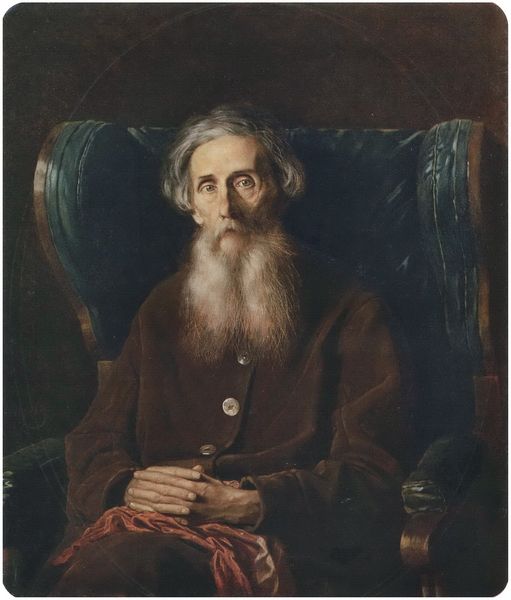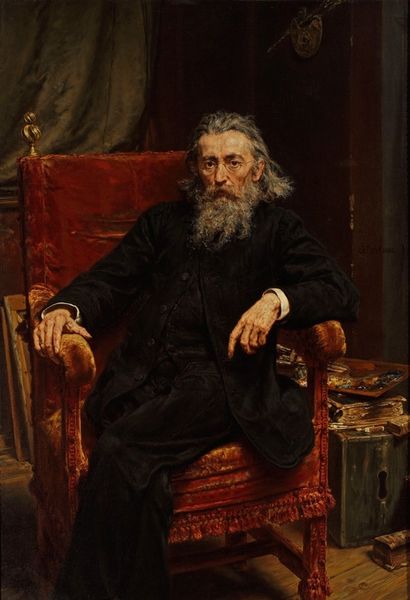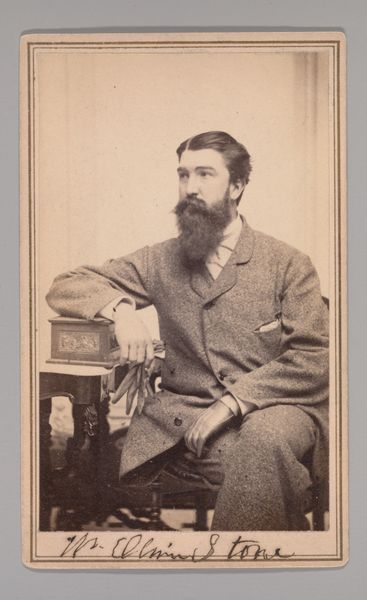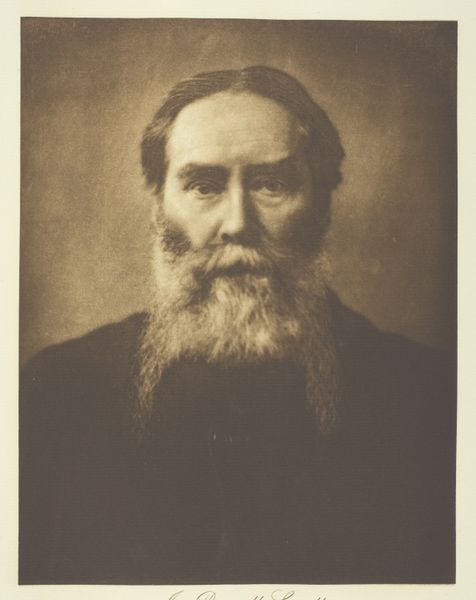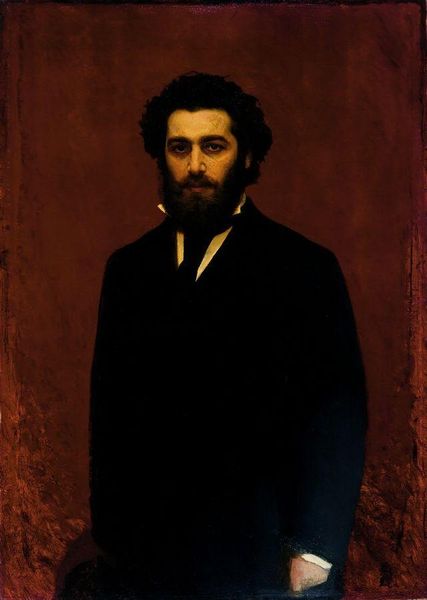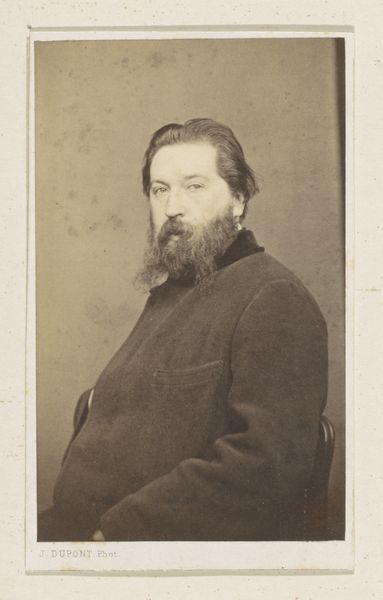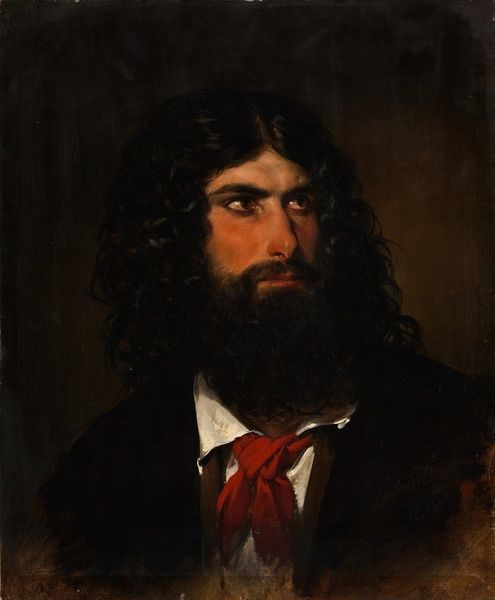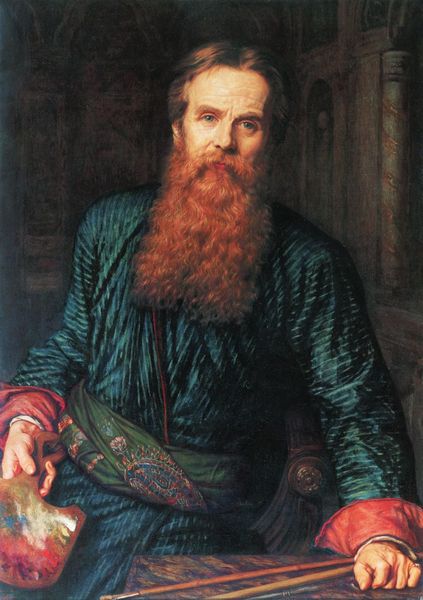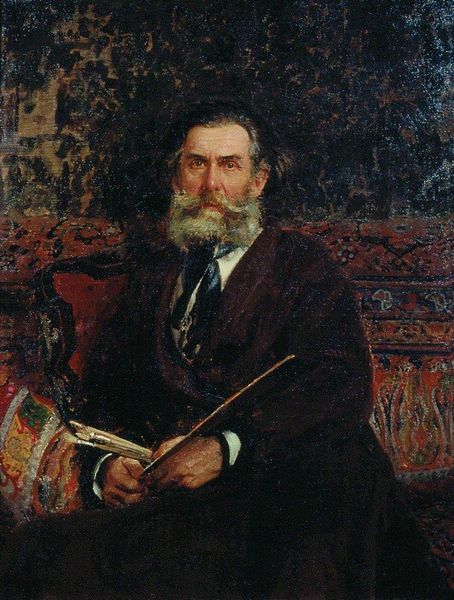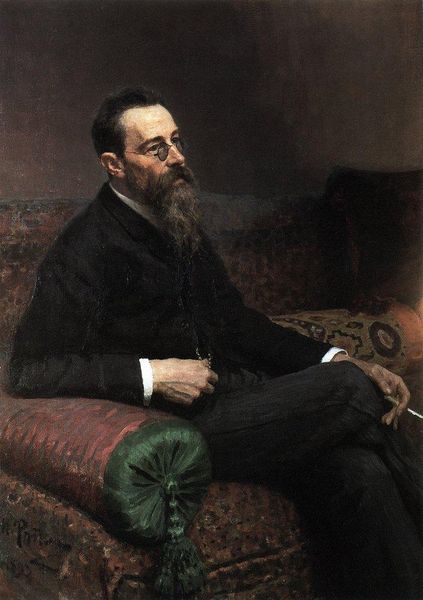
Copyright: Public domain
Curator: Standing before us is Ivan Kramskoy’s 1885 oil portrait of Vladimir Solovyov, a depiction laden with philosophical undertones. Editor: It strikes me immediately by its somber palette—muted browns and blacks that create a mood of introspection, the overall impression being heavy and intellectual. Curator: Kramskoy's emphasis on the chiaroscuro is quite notable, drawing the viewer’s eye to Solovyov’s face and hands, the expressive focal points of the composition. We see the texture and build-up of the impasto in those areas especially. Editor: Speaking of materials, note the contrast: the philosopher in dark wool sits framed by an ornately carved wooden chair. Kramskoy draws our attention to textures of daily life juxtaposed against Solovyov’s scholarly life of the mind. Curator: Indeed. The diagonal composition, with the book resting on his lap, generates a visual pathway. This aligns with the Romantic tradition's fascination with the individual immersed in thought, quite unlike the rigid classicism before it. Editor: Considering production and artistic labor, look closely at how Kramskoy handled paint, with the detail of Solovyov’s beard, the book, and chair. One wonders what discussions about materiality or process the painter and the sitter may have entertained while composing it. Curator: It’s quite difficult not to see in the gesture of his hand raised to his brow, the embodiment of contemplative thought. He becomes a symbol for all who seek wisdom through rational inquiry, as does the act of portraiture become associated with a symbolic form of wisdom. Editor: Reflecting on all these layers and nuances now, this artwork gives us clues about philosophical work at that time, it transcends simply being a painting—it’s a cultural artifact of intellect and material making. Curator: I agree. It provides us with a very intimate glimpse into not only the man himself, but into the artistic conventions defining how ideas were being depicted at that moment. Editor: Yes, exactly. Through the paint and labor on display we may reflect on that moment’s preoccupations with knowledge, spirituality, and being.
Comments
No comments
Be the first to comment and join the conversation on the ultimate creative platform.

